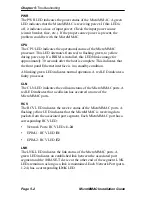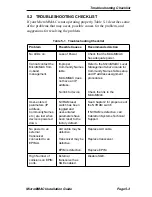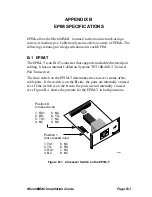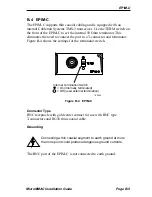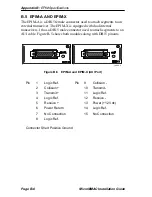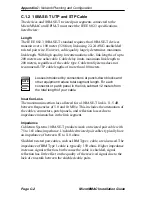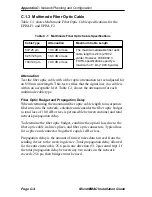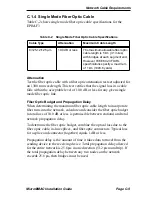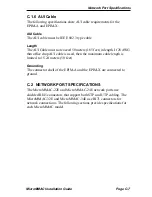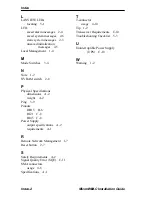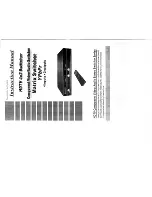
Network Cable Requirements
MicroMMAC Installation Guide
Page C-3
Jitter
Intersymbol interference and reflections can cause jitter in the bit cell
timing, resulting in data errors. A 10BASE-T link must not generate more
than 5.0 ns of jitter. If the cable meets the impedance requirements for a
10BASE-T link, jitter should not be a concern.
Delay
The maximum propagation delay of a 10BASE-T link segment must not
exceed 1000 ns This 1000 ns maximum delay limits the maximum link
segment length to no greater than 200 meters.
Crosstalk
Signal coupling between different cable pairs within a multi-pair cable
bundle causes crosstalk. 10BASE-T transceiver design alleviates concerns
about crosstalk, provided the cable meets all other requirements.
Noise
Crosstalk or externally induced impulses can cause noise. Impulse noise
may cause data errors if the impulses occur at very specific times during
data transmission. Generally, noise is not a concern. If noise-related data
errors are suspected, it may be necessary to either reroute the cable or
eliminate the source of the impulse noise.
Temperature
Multi-pair PVC 24 AWG wires typically have an attenuation of
approximately 8 to 10 dB/100 meters at 20
°
C (68
°
F). The attenuation of
PVC insulated cable varies significantly with temperature. At
temperatures greater than 40
°
C (104
°
F), Cabletron Systems recommends
the use of plenum-rated cables to ensure that cable attenuation remains
within specification.



